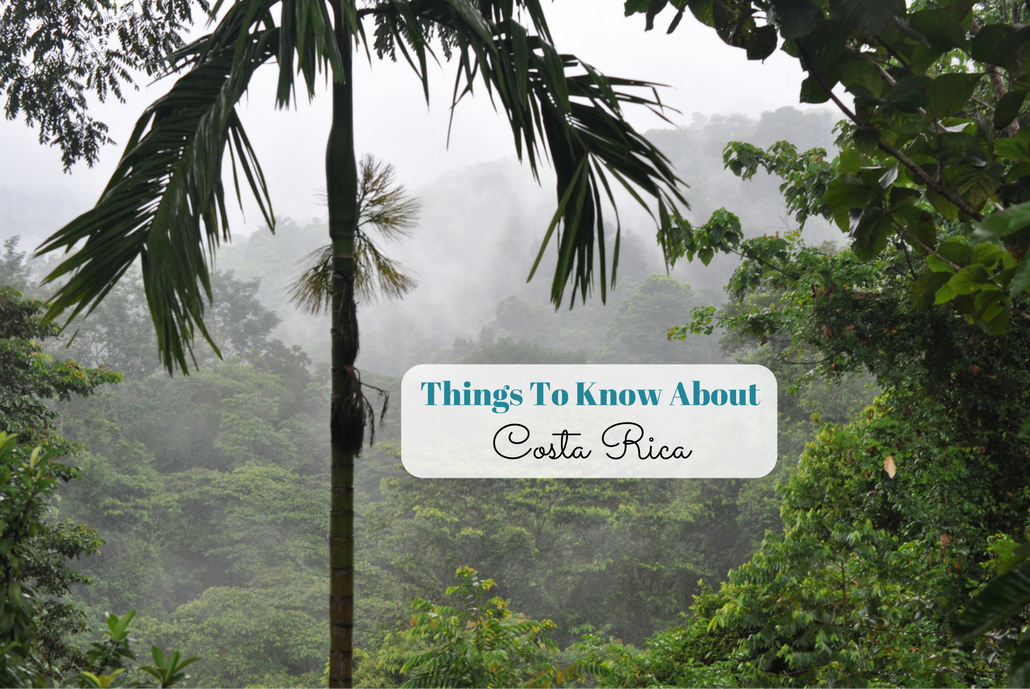
Perhaps you’re debating about making Costa Rica the next stop on your travel journey, or maybe you’ve already got your tickets booked and are going to Costa Rica with your family (or sans kids) and want to be prepared. Either way, you may find these things to know about Costa Rica helpful. While many of these points ring true for Colombia as well (and perhaps all or most of Central and South America), I’m specifically basing this list off of our recent trip to Costa Rica. Let’s keep this short and sweet for all you travel-thirsty readers out there.
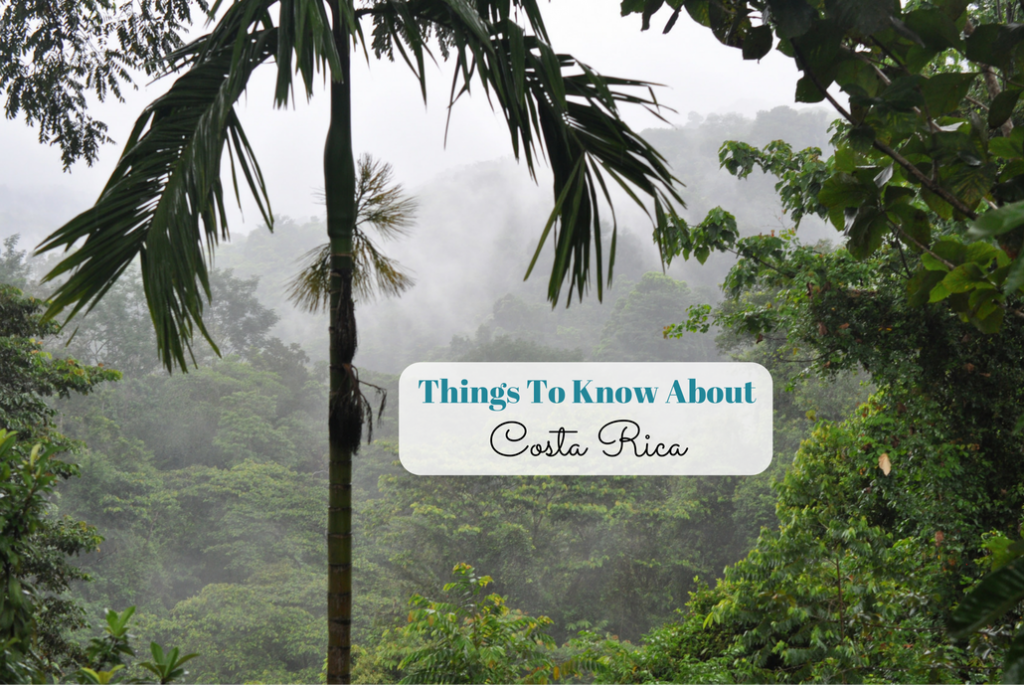
This one we didn’t know about until *someone* clogged the toilet in an aparentment in Santa Marta, Colombia. The memory of that not-so-awesome experience let us be wary of this heading to Costa Rica, and when we enquired we were assured that under no circumstances are you to flush down anything besides your business. There is a garbage bin placed next to each toilet, and that’s where you dispose of the paper.
I know, it sounds gross and you feel weird the first few times you put the paper in the bin, but it’s really not that big of a deal. You just ball it up well, and the baby-powder scented toilet paper does it’s job to keep the bin from smelling. Also, the bin will be changed frequently. So get over the difference from our lazy and “ew-that’s-gross” mentality of our North American ways, and just do what needs done. Don’t be that stubborn gringo who decides his customs are more important than their sewers.
My family is not rolling in the dough, so we tend to plan our travels in places that don’t over-exert our wallets. As this trip was a “forced vacation” to see some special people in our life tie the knot (woe are we, right?), we booked our tickets without much research into Costa Rica. We quickly found that prices there seem to be about par with The States (or at least the northern states we have frequented), which makes it even more expensive for us Canadians with our dollar the way it is right now. Our average hotel price was around $100 US a night, and our meals usually ran around $40-$50 for an “average” restaurant, and $100 for a moderately “nice” restaurant. You’d think the smaller towns and traditional “Sodas” (like a diner) would offer cheap prices, but they were still far more expensive than the food costs we’re used to on our trips.
The moral to my story: Expect to spend a fair amount of money, and budget accordingly.
Yes, Costa Rica is ridiculously touristed, which means that there is a lot of English spoken, and many of the locals will be able to communicate in our native tongue. If you’re planning on practicing your Spanish, you might be somewhat dismayed/relieved when you try to order or ask a question en Español, and the local only responds to you in English, giving off the message of “Please, don’t waste my time, gringo”.
However, I encourage you to use as much Spanish as you can, and never assume that the other person speaks English. Imagine you’re hanging out downtown anywhere in Canada or the States, and someone walks up to you and starts speaking a foreign language, assuming you must know their own mother tongue. How rude, right? If you would rather or can only converse in English, always start an interaction in Costa Rica with “Hablas inglés?” (Do you speak English?) It’s just the polite thing to do.
Also, recognize that there are places you might find yourself where no one speaks English, especialy in small towns. For instance, in Tarcoles (where you can spy some huge crocs), I had to (and proudly succeeded in) check in at a hotel we found, then communicate our concerns, check out, and refund our money – all in Spanish. I must say, I did amazing (pat, pat), but I have a couple years of University Spanish classes under my belt that came back. Make sure you bring a phrase book or have offline access to a translation app if your Spanish needs some help.
We found this out in Colombia first. For some reason these Latin American countries (perhaps even all?) don’t use addresses. In order to catch a cab or find your way anywhere, you need to know a common landmark. The location of many well-known places will be known just by name, but to direct someone to a lesser-known location, you’ll need to know the landmark near it. This will be especially important if you plan on renting a car and using GPS to get around (which I highly recommend – we would have been entirely lost without it).
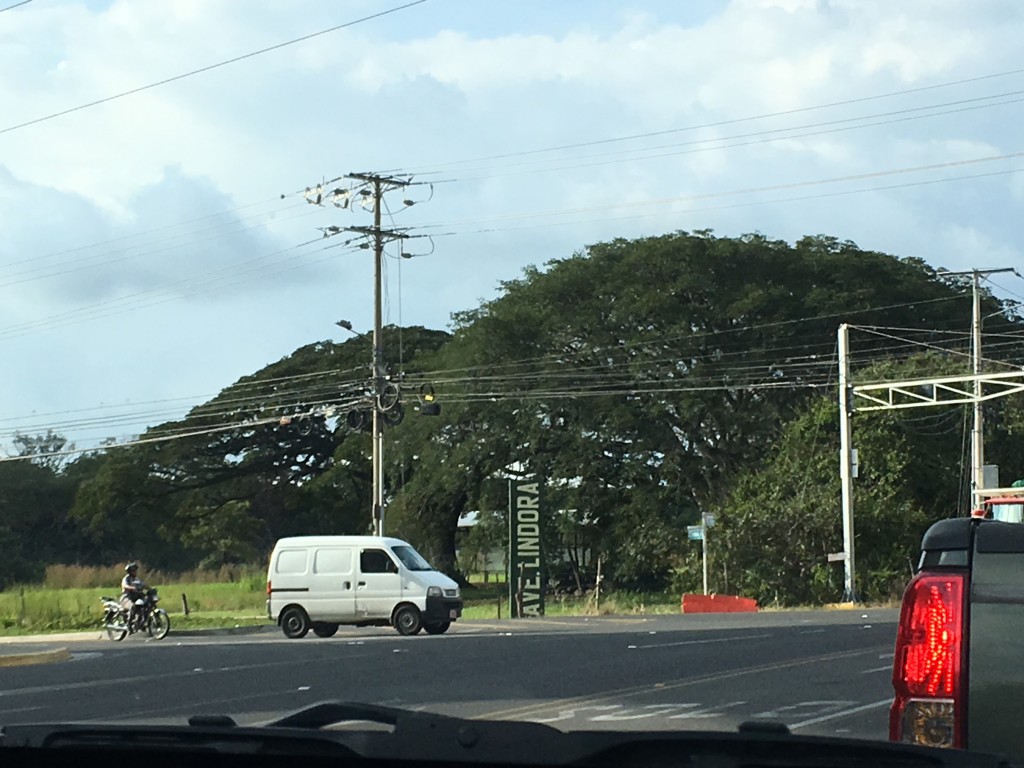
For instance, the first hotel we stayed in in San José was the El Rodeo. Our cab from the airport knew where it was (even if we had an address, it would have been useless to him), but on picking up our car the next day and trying to drive it back, the hotel name was not recognized in the GPS. Instead, we needed to set a destination to a landmark nearby, and find our way from there. Had we not been with the rental car employees, we would have had no idea that the landmark we needed to find was “Panasonic”.
So, tricky to get around for us that are used to addresses, but it can be done. Just make sure you get that GPS, and try to know the landmarks near where you need to be.
Speaking of driving, holy moly. Another thing done differently in Costa Rica is the way people handle traffic. We never had an issue with this until we got back to San José the night before our flights home. On arrival, we must have missed all the rush hour traffic, but coming back into the big city we hit it right on time for the traffic jams. It was ridiculous how long it would take to move five feet down the road, and at first we thought it must just be an accident. While there was an accident we passed, we soon realized that was just the way the roads were during busy times.
The problem seemed to be that everyone tries to budge their way in, and no one wants to let anyone in. With four lanes merging into one, this presents a serious jam-up. Rather than the one-to-one merging pattern we understand and politely follow back home, this was a crazy free-for-all, with cars pushing in wherever they were, crossing lanes and many even driving at full speed up the incoming traffic lane to skip the wait. That drive was one of the craziest of my life, as short as it was, and took an hour and a half to move just a few miles back and forth from the hotel to the gas station.
Moral: Avoid rush hour at all costs, and plan lots of extra time if you need to be somewhere at rush hour. (Like the rental agency to return you car on time. Oops.)
We spent the majority of our trip on the Pacific coast (the left side), so I really can’t say anything about the Caribbean coast, but the Pacific coast was fairly rough. Many of the beaches were great for surfing, which means lots of big, powerful waves, and undercurrents that are dangerous for swimmers, especially kids. While there were two beaches (Playa Biesanz and Playa Manuel Antonio) we found that were safe enough to take our 3-year-old swimming, the majority of the beaches aren’t family-friendly in this way. If you plan on hanging out by the ocean with your family, make sure to do your research and know what the beaches you’ll be visiting are like.
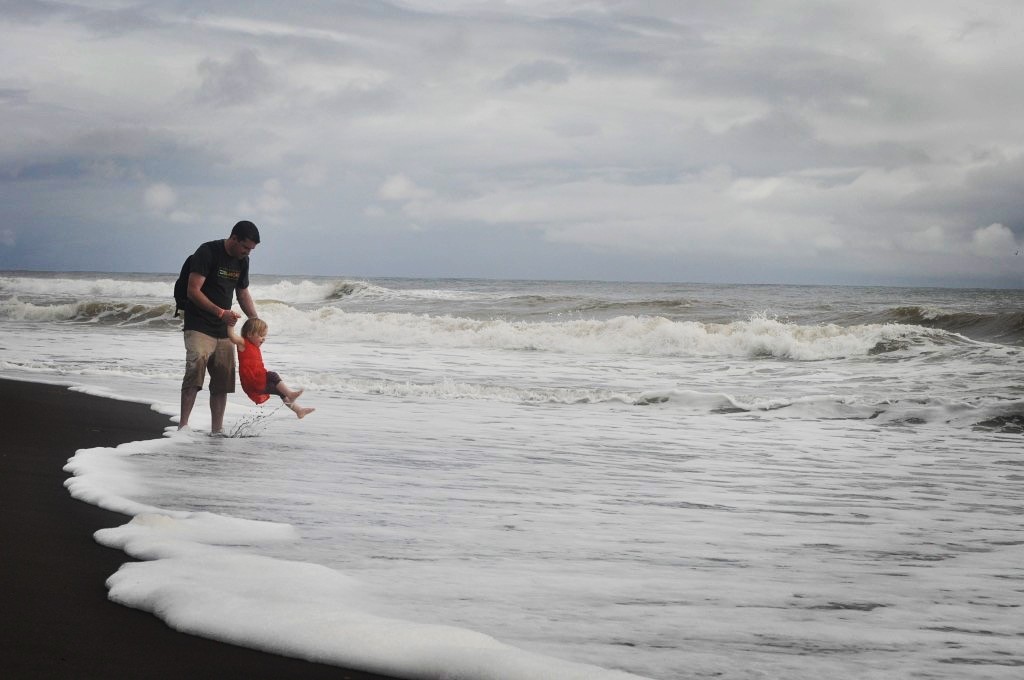
These little guys were crawling all over everywhere we went in Costa Rica. We found their organization and the paths that they cut out of lawns and ground to be amazing, but I’m sure the locals aren’t especially fond of these insects as they destroy trees and plants by cutting their leaves to parade back to their nests. (Fun fact: Leaf-cutter ants don’t eat the leaves, they pile them up in order to grow a specific mushroom that they eat.)
These ants are red, and being that they chop through leaves and ground, I’m sure you can understand that their bite packs a punch. While I didn’t get the pleasure of experiencing a bite, my father-in-law and my daughter both had run-ins with their chompers and attest to the pain that is caused. Keep your eyes out for trails and the ants traveling back and forth, and keep yourself out of their way.
Costa Rica is lush with forests and jungle, and brimming with wildlife. It’s easy to forget, living in Canada, that there are so many big and little creatures to be wary of when we’re away. Knowing what to watch out for and how to stay safe (stay in the middle of the trails!) is probably one of the most important things to know about Costa Rica. Taking a trek through the rain forest, the guide made us aware of many of the dangers of stepping off the trail, and why we all needed to keep our eyes open. Poisonous frogs, tarantulas, venomous spiders and snakes (both of which we saw on our trek), biting insects, jaguars, cougars, and crocodiles are some of the things to keep in mind when you’re walking through the jungle, or even just over a bridge. The holes at the ends of the bridge rails we passed all had something hiding in them, from geckos to Costa Rica’s most venomous Banana Spiders.
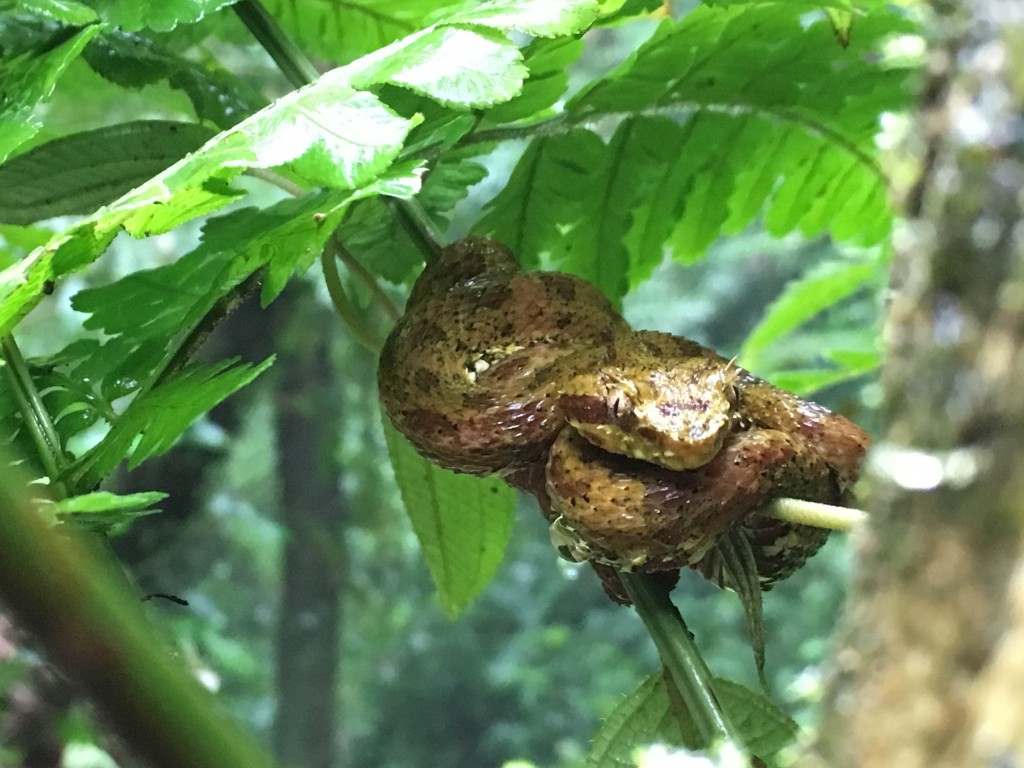
Here’s a cool trick: Take your cell phone and turn on the camera with flash and point it into the holes at the ends of the bridge rails, or elsewhere, and you can see what’s hiding in there. Be cautious, obviously, but this trick the trek guide showed us really let us get a better idea of what is hiding all around us.
Edit: I now have a post up that shows you the many different kinds of wildlife we saw while in Costa Rica. Read it here.
An interesting structural feature I noticed in both of the double-room suites we rented was that the walls separating the bedrooms from the main living space did not connect with the ceiling. There was at least a 4-foot gap (disclosure: I’m awful with guessing distance) between the top of those walls and the ceiling, which made sound travel like nobody’s business. You could even hear when someone was whispering (not what was said, but that they were whispering). This proves incredibly frustrating if, say, you’re sharing an apartment with another couple and baby for the last week of your trip, and the baby is having a hard time and wakes up screaming for long periods multiple times every night.
Moral: If you plan on saving money by sharing a suite with other people, keep in mind that you will likely be able to hear each other. Saving money is not always worth the consequences.
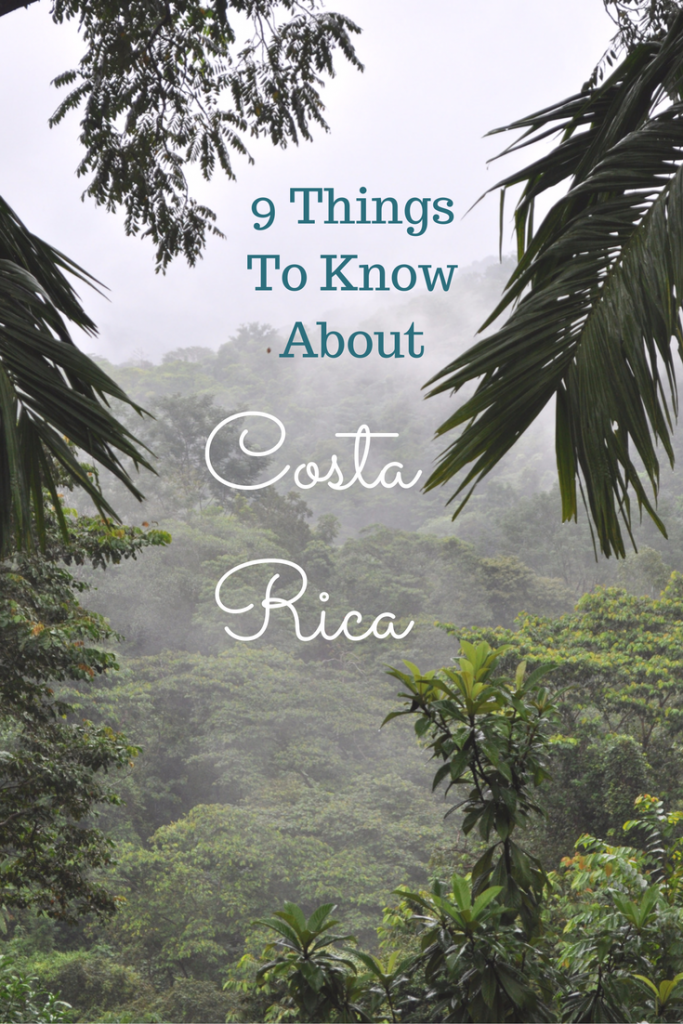
So there you have it. I hope that these things to know about Costa Rica that I’ve shared will help you plan and make your trip more enjoyable. Do you have any more tips? I’d love if you shared them, or anything else you have to say about this, in the comment section below.
If you like to travel, have young kids, like simplicity, live naturally, enjoy winning things, and appreciate learning about cool new things that might be useful to you, I highly suggest you get your name on my newsletter list. That way you can get my short and sweet weekly notification about what’s newly posted on the blog, and if there are any sweet giveaways running. I have a lot more to share about our most recent family vacation in Costa Rica, so keep an eye out for that in the next few weeks.
Thanks for reading!
3 thoughts on “9 Things To Know About Costa Rica Before You Go”
Pingback: Costa Rica Wildlife: 25+ Species To Spot - The Big To-Do List
Pingback: How To Plan A Trip That's as Stress-Free as Possible - The Big To-Do List
Pingback: Family Vacation in Costa Rica: Our 2 weeks Travel Itinerary - The Big To-Do List